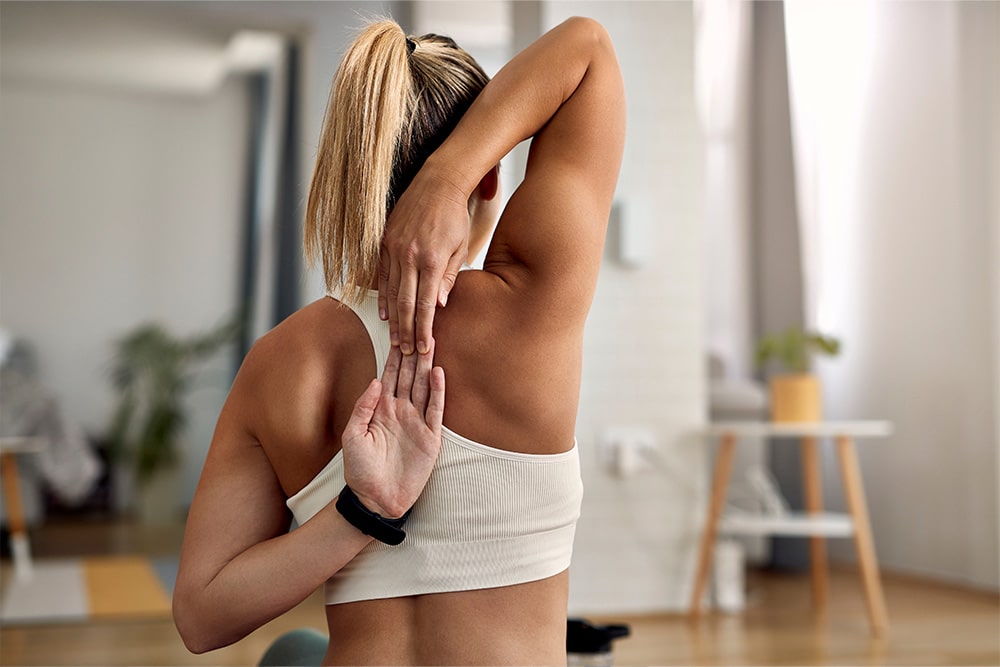Rotator cuff repair
Rotator cuff repair is the process of repairing the torn rotator cuff tendons back to the upper arm bone
Rotator cuff repair
Acromioclavicular (AC) joint stabilisation is the process used to fix collarbone dislocation.

What is a rotator cuff tear?
The rotator cuff is a group of four muscles and tendons that attach the tops of your arm bone to your shoulder blade and socket. Rotator cuff tears are the most common cause of shoulder disability. When the rotator cuff is injured or torn – for example, after lifting something heavy – lifting and rotating the arm becomes difficult and painful. Rotator cuff tears are common and their occurrence increases with age. Approximately 30% of people over the age of 60 will have a full thickness rotator cuff tear and approximately 65% of people over the age of 70 will have a full thickness tear. Whilst the majority of these are due to chronic wear and tear, there can also be acute tears due to traumatic events, such as an injury or fall, which is more common in younger patients.
Symptoms from rotator cuff tears can vary from minimal to debilitating. The severity is determined by the size of the tear and whether it is an acute injury or chronic wear and tear. Typical symptoms are pain with overhead lifting and over the side of your shoulder. You may also have difficulty lifting or lowering your arm and also notice weakness in the arm. A feeling of “crackling” when moving your shoulder is common. The pain might also intensify at certain times of the day – for example, in the evening or night when your shoulder is at rest.
If you suspect that you might have a rotator cuff injury, Dr Cheriachan will take a thorough history and examination to assess your shoulder. Physical tests are often sufficient to detect rotator cuff deformities. Issues with strength or range of motion in the shoulder are common symptoms. You will be referred to have an X-ray, MRI, or ultrasound of your shoulder to determine the severity of the tears and how many tendons are involved to better tailor a treatment plan individualised for you.
In both short and long standing tears, successful non-surgical options include physiotherapy exercises, anti-inflammatory medication, activity modification and possible steroid injections. In some cases these may be sufficient to reduce the pain of rotator cuff injuries. If your work or lifestyle requires frequent and heavy shoulder use, you may need to modify your activities and strengthen the shoulder through physical therapy in order to prevent recurring injury. For patients where symptoms persist, or in younger patients with acute traumatic tears, surgical rotator cuff repair may be the only option for regaining strength and range of motion. Typically this is performed arthroscopically with multiple small incisions in the shoulder and using a camera to look into your shoulder and bone anchors with stitches to repair the tendon to bone.
The results of this surgery will depend on the severity of the tear. For large rotator cuff tears, the healing process may be longer and more intensive. By following the rehabilitative advice, you will give yourself the best chance of a strong recovery. Rehabilitative exercises are also the key to minimising post-operative stiffness, which is amongst the most common problems for patients who have been through this surgery. Following your treatment plan, you should experience a reduction in pain and an improvement in shoulder strength and range of motion after surgery.
Whilst the majority of people who undergo shoulder surgery do well and are very happy with their function and result, there are general risks of surgery as listed in the FAQ sections.
There are also specific risks associated with rotator cuff surgery which includes, the tendon not healing or re-tearing which can occur in 10-50% of cases depending on the severity of the tear. In cases where the tear is large, and has been a long standing injury it may not be possible to stretch the tendon back to repair it to bone. Injury to the nerves tendons or blood vessels close to the surgical field which may require further surgery. Risk of stiffness or developing a frozen shoulder, ongoing pain or weakness, fracture of the bones and abnormal pain responses such as Chronic Regional Pain Syndrome (CRPS) can occur.
Most of these risks are low and less than 5 %, but it is important to be aware of these risks before consenting to surgery. Dr Cheriachan will discuss with you in detail the risks of surgery and how to prevent them during your consultation.
The full rehabilitation process for rotator cuff surgery typically lasts from six to twelve months. During which pain, soreness, and stiffness continue to gradually improve. Depending on the size of your tear, the process begins with either rest in a sling or passive shoulder exercises for the first six weeks after surgery, followed by another six weeks of active exercise. After twelve weeks, you will start on a program of strength exercises to regain full pre-operative movement. During the rehabilitation period, you should avoid any repetitive activities that involve lifting things and raising your arms above your head. These movements put the shoulder area under stress and can slow recovery and increase the chance of the tendon not healing or re-tearing. During this time it is also important to exercise your hand, wrist and elbow to avoid stiffness in these joints as well.
Preparing for your visit
Dr Cheriachan consults from Norwest on Wednesdays and Blacktown on Mondays and Thursdays.
Your first visit will be used to carefully assess your condition as well as gathering all related health information. It is important that you bring all relevant documents including scans and x-rays. We also ask that you wear clothing that allows freedom of movement as your visit will include a physical examination.